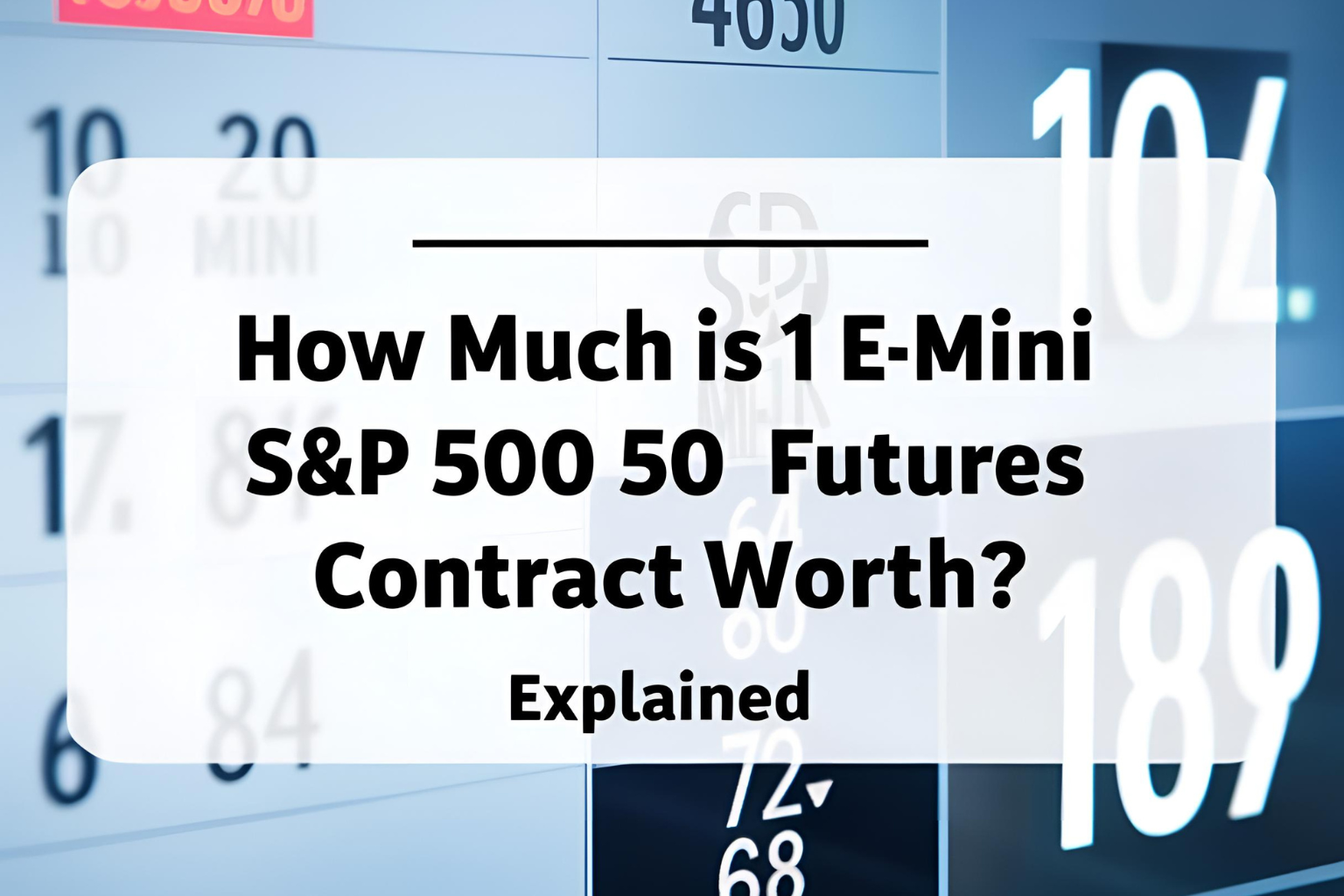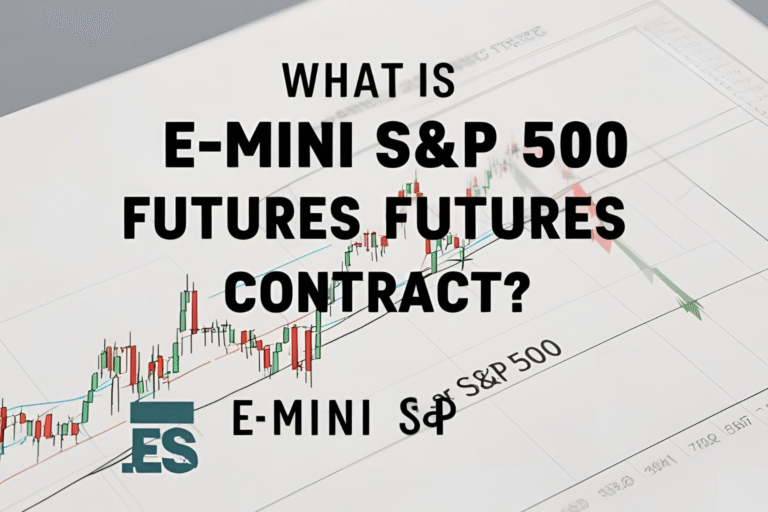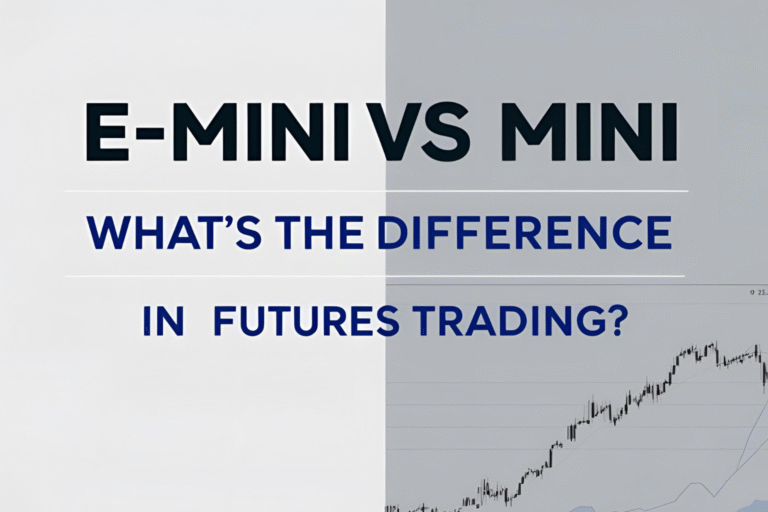How Much Is 1 E-mini S&P 500 Futures Contract Worth? Explained
If you’re new to futures trading, one of the first things you’ll want to know is: How much is one E-mini S&P 500 (ES) contract worth? Understanding contract value is crucial for risk management, position sizing, and profit calculation—especially if you’re trading from India through international brokers.
Let’s break it down step-by-step.
What Is the E-mini S&P 500 Futures Contract?
The E-mini S&P 500 futures contract, often referred to by its symbol ES, is a futures product that tracks the value of the S&P 500 Index. It is traded on the CME Globex exchange and is among the most liquid futures contracts in the world.
Contract Size and Multiplier
Each ES contract represents 50 times the current value of the S&P 500 index.
Formula:
Contract Value = Index Price × $50
So, if the S&P 500 is trading at 4500:
Value of 1 ES Contract = 4500 × $50 = $225,000
This means you’re controlling $225,000 worth of market exposure with one contract.
Tick Size and Tick Value
A tick is the minimum price movement.
- Tick size for ES: 0.25 points
- Tick value: $12.50 per tick
That means every 0.25-point move up or down results in a $12.50 gain or loss per contract.
If the ES moves 5 points in your favor:
- That’s 5 ÷ 0.25 = 20 ticks
- 20 × $12.50 = $250 profit
Daily Price Fluctuation Example
Let’s say the ES moves from 4500 to 4520 during the trading session:
- That’s a 20-point move
- 20 × $50 = $1,000 per contract
You can see how even small moves in the index translate to significant gains (or losses) because of the contract size.
Margin Requirement
To trade one ES contract, you don’t need $225,000 in your account. Brokers use margin, which is a small fraction of the full contract value.
Typical margin requirements:
- Initial margin: ~$11,000 to $13,000 (varies by broker and market volatility)
- Maintenance margin: Slightly lower than the initial margin
This leverage allows traders to control large positions with smaller capital, but also increases risk.
How It Compares to Micro E-mini (MES)
The Micro E-mini S&P 500 contract (MES) is one-tenth the size of the ES contract.
| Feature | ES (E-mini) | MES (Micro E-mini) |
|---|---|---|
| Multiplier | $50 | $5 |
| Tick Value | $12.50 | $1.25 |
| Margin | ~$12,000 | ~$1,200 |
| Contract Value at 4500 | $225,000 | $22,500 |
For new or small-account traders, MES is often the better starting point.
Why Knowing Contract Worth Matters
- Risk Management: You can size your positions accurately based on how much capital you want to risk.
- Trade Planning: Helps calculate stop-loss, profit targets, and maximum drawdown.
- Margin Planning: Knowing the required margin helps avoid liquidation during volatile moves.
- Currency Conversion: Indian traders must also consider INR to USD exchange rate when funding international accounts.
Example for Indian Traders
Let’s say:
- You want to trade 1 ES contract
- S&P 500 is at 4450
- Your broker requires $12,000 margin
- You remit ₹10 lakh (assuming ₹83 per USD ≈ $12,000)
You are exposed to $222,500 in market value with ₹10 lakh. A 10-point adverse move equals a $500 loss, which is roughly ₹41,500.
This highlights how critical it is to:
- Use stop-losses
- Start with MES
- Understand the actual contract worth before entering a trade
Final Thoughts
A single E-mini S&P 500 futures contract may seem simple, but it’s a powerful instrument. At current index levels, it’s typically worth over $200,000, with each tick valued at $12.50. That’s why proper calculation, preparation, and capital management are essential.
Before trading, always know how much the contract is worth—and what even a small move means for your account balance.
FAQs
Q1. What is the current value of an E-mini S&P 500 futures contract?
It depends on the index price. Multiply the index level by $50 to get the contract value.
Q2. Is the ES contract too big for beginners?
Yes. Beginners should start with the Micro E-mini (MES), which is one-tenth the size.
Q3. How much capital do I need to trade one ES contract?
Most brokers require around $11,000–$13,000 in margin, but it’s safer to have at least $20,000–$25,000 to avoid forced exits.
Q4. Does the contract value change daily?
Yes, as it depends on the S&P 500 index value, which moves in real-time.
Q5. Is the value the same across all brokers?
Yes. The contract size and tick value are standardized by the CME. Margin requirements may vary by broker.





